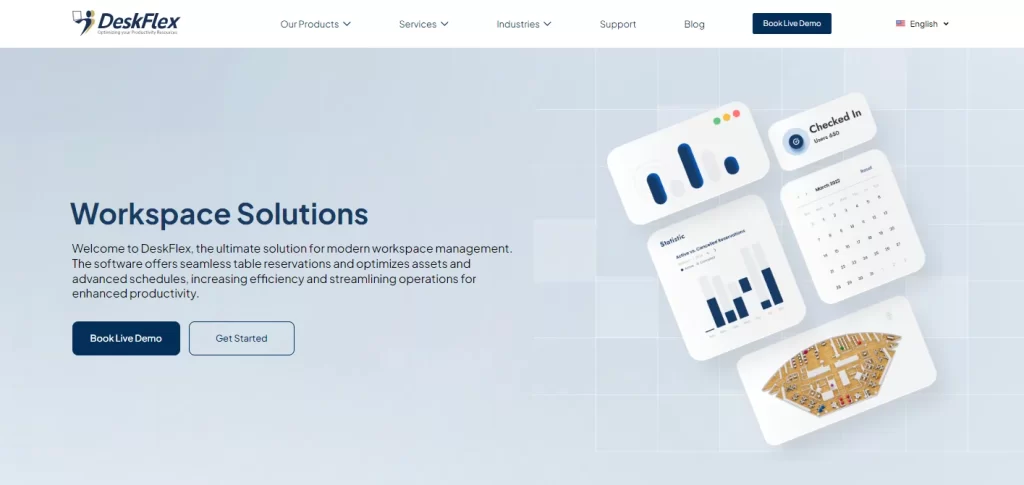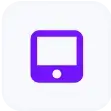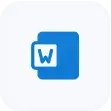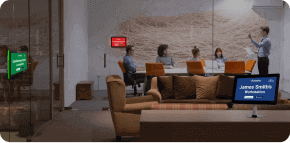Blog

Hybrid Workplace Management Software Purchase Guide in 2025
Workplace management software and integrated workplace management systems (IWMS) have become essential for modern businesses. They offer solutions that help manage everything from space utilization to facilities and asset tracking.
Investing in workplace management software enables companies to save costs, improve efficiency, and better understand how their space is used.
Every organization benefits from having a unified system to oversee workplace operations, regardless of its size.
In this article, we’ll explore workplace management software, its types, and the practical benefits these systems offer in today’s business environment.
What Is Workplace Management Software?
Workplace management software is a digital solution designed to help businesses organize and streamline various office and facilities management aspects.
This software encompasses everything from space management to asset tracking and facilities maintenance, consolidating these functions into one unified platform.
At its core, workplace management software aims to improve how organizations use and manage their workspaces.
Understanding the Key Components of an Integrated Workplace Management System
An IWMS combines essential tools to support efficient workplace management, including space utilization, facilities upkeep, real estate strategy, and daily operations.
Each component contributes to a cohesive workplace experience:
1. Space Management
Space management tools help monitor available areas, optimize desk and office occupancy, and support future planning.
With features like desk booking and occupancy tracking, businesses can manage their space effectively, reduce unused areas, and enhance layout flexibility.
2. Facilities Management
Facility management tools help avoid disruptions and improve employee comfort by managing assets, scheduling maintenance, and monitoring compliance.
Systems that automate maintenance requests, track equipment conditions, and monitor facility usage create a seamless work environment that minimizes downtime.
3. Real Estate and Portfolio Management
An IWMS enables businesses to make informed decisions on real estate portfolio management.
By tracking occupancy and space usage across locations, companies can identify opportunities to consolidate or optimize spaces, leading to substantial cost savings.
4. Workplace Operations
IWMS platforms streamline workplace operations to enhance daily workflows, from employee check-in systems to booking meeting rooms.
These tools enable smooth coordination between remote and in-office employees, ensuring all team members can access necessary resources without overlap or delays.
5. Space Utilization and Planning
Effective space utilization is a key benefit of an IWMS, allowing businesses to leverage data insights to improve space allocation and reduce wasted areas.
Real-time data, such as occupancy rates and usage patterns, inform layout adjustments to meet employee needs better.
6. Asset Management
This integrated workplace management software is also reliable in managing one’s assets through technology. In the office, the utilization of physical assets is also crucial.
A company must ensure its employees properly utilize its furniture, equipment, and other physical resources.
Manage Your Hybrid Workplace with Confidence
Discover how DeskFlex’s hybrid workplace management software streamlines operations, boosts productivity, and maximizes space efficiency.
7 Benefits of Workplace Management Software for Organizations
For organizations managing dynamic workspaces and hybrid models, these tools provide actionable insights into how office resources are used, empowering them to make informed, data-driven decisions.
1. Cost-Saving Solutions
By optimizing resource allocation, organizations can identify opportunities to cut costs across multiple areas. For example, efficient space utilization often leads to lower real estate expenses.
When a company fully uses its available space, it can avoid the costs associated with underutilized areas or consider downsizing, ultimately reducing rental or ownership expenses.
2. Increased Efficiency and Productivity
Automating workplace operations can boost efficiency and productivity. Employees can focus on higher-value tasks that drive the organization forward by reducing manual processes.
Workplace management software systems offer tools to simplify room bookings, space allocation, and asset tracking, allowing employees to navigate their tasks without administrative delays.
3. Improved Space Utilization and Planning
Real-time data insights from workplace management systems allow businesses to make informed decisions about workspace allocation and design.
This adaptability helps organizations meet present needs while future-proofing their spaces to support different work styles, from individual desks to collaborative work zones, making sure that every square foot is purposefully used.
4. Enhanced Employee Experience
Workplace management software can improve the employee experience by ensuring the workspace is efficient, comfortable, and aligned with their needs.
Features such as hot desking and flexible check-in processes allow employees to select spaces that suit their tasks, whether they need a quiet desk for focused work or a meeting room for collaboration.
5. Data-Driven Decision Making
IWMS platforms provide access to a wealth of data that allows businesses to monitor trends, track space utilization, and analyze cost patterns.
Organizations can leverage these insights to make strategic decisions around future planning, budget allocations, and space management, ensuring that the office layout, resources, and operations align with both current and future needs.
6. Operational Efficiency
As the software streamlines facility management, it also reduces manual efforts. It only means an organization can have an automated procedure for handling facilities.
In other aspects, it also lessens errors like the ones that used to occur with manual management.
7. Comprehensive Reporting
Software tools like IWMS guarantee a return after its usage. In other words, it can generate comprehensive reports for aspects like facility and asset management.
The analysis will help the organization oversee its work environment. It is another outlet for them to strengthen productivity and identify areas for further improvement.
What to Look for in Workplace Management Software

Space Planning and Management Tools
Space planning and management tools are essential for an organized and efficient workspace. Space planning tools help with space allocation, occupancy planning, and tracking space utilization.
Features like interactive floor maps and desk booking systems enable employees to see available workspaces and reserve them on the go.
Data and Reporting
A robust IWMS solution includes analytics and reporting features, allowing management to analyze space utilization trends, cost management, and future space needs.
Reporting capabilities provide valuable information for strategic planning and ensuring that resources align with company objectives.
Mobile Accessibility and Integration
Mobile features allow employees to manage workspace access, reserve desks, and even check in remotely, making hybrid work models easier to support.
Integrating existing systems—such as human resources software or access control systems—enhances the software’s functionality, providing a cohesive experience that helps streamline workflows and ensures seamless platform updates.
How Workplace Management Software Supports Hybrid and Flexible Work Environments
Workplace management software provides tools for both in-office and remote work, helping businesses create environments suited to diverse work needs.
Below, we discuss how features like hot desking, collaborative spaces, check-in processes, and data-driven insights support an effective hybrid workplace.
Flexible Space Solutions: Hot Desking and Desk Booking
Workplace management software enables flexible work arrangements by offering hot desking and desk booking tools. Hot desking allows employees to choose available workstations on a first-come, first-served basis, maximizing space use for hybrid teams.
Desk booking systems, on the other hand, allow employees to reserve workstations in advance, ensuring they have a dedicated space when working on-site.
Creating Collaborative and Private Spaces
Effective hybrid work environments require a mix of collaborative and private spaces to meet various employee needs.
Workplace management software supports this by enabling flexible office layouts, helping organizations design spaces that suit different work styles.
Companies can support collaborative projects and individual tasks requiring focus by implementing configurable areas.
Employee Check-In and Access Management
Efficient check-in processes and access management are crucial for hybrid teams, especially when employees work on different schedules.
Workplace management software can streamline these processes, allowing employees to check in quickly and providing real-time data on workspace occupancy.
Leveraging Data to Adapt Workspaces
Organizations can identify patterns by tracking occupancy and usage data, such as peak workspace demand or underutilized areas.
This data enables managers to make informed decisions, adjusting space allocation and layout based on real-time needs.
Evaluating and Selecting the Right Workplace Management Solution
Choosing a workspace management solution is a strategic decision that impacts your organization’s operations, productivity, and employee experience.
Check out the following guide on the key factors to consider when selecting a tool that best fits your business needs.
1. Assess Your Business Needs
Consider company size, space limitations, and the type of work environment, such as a fully on-site, hybrid, or remote work model.
Define your goals clearly to understand how workplace management software can support them. This can include improving space utilization, enhancing team collaboration, streamlining asset management, and driving workplace transformations to create more adaptable, efficient environments.
2. Compare Key Features
Evaluating the features of each solution is essential to ensure they align with your organization’s unique needs.
Common features like space planning, asset management, and reporting are crucial for optimizing resources and understanding usage patterns.
3. Consider Scalability and Flexibility
As the organization expands, the software should accommodate increasing employee numbers, workspaces, and added functionalities.
Flexibility in configuration and customization ensures the tool can adapt to evolving needs, providing a long-term solution rather than a temporary fix.
4. Look for Data Security and Compliance Features
Workplace management software should offer robust security features to protect against data breaches and maintain compliance with regulations like GDPR.
Look for security measures like data encryption, access controls, and regular security audits to ensure reliable data protection.
How DeskFlex Can Power Your Hybrid Work Model

Its intuitive desk booking and hot desking system allow employees to reserve workstations in advance or find available desks on demand, ensuring that space is used effectively and that there’s always a spot for those in the office.
DeskFlex also streamlines meeting room management with real-time updates and booking options accessible from both desktop and mobile, reducing scheduling conflicts and enhancing the meeting experience.
Additionally, the platform includes visitor management, which tracks guest arrivals and integrates with room reservations, maintaining both security and smooth visitor flow.
Real-time data insights provide managers with critical information on space usage, supporting smarter layout decisions and identifying areas for improvement.
By prioritizing flexibility and accessibility, DeskFlex simplifies the hybrid work experience, fostering a more adaptable, secure, and satisfying workplace for all employees.
Book Your Free Demo with DeskFlex today and discover how our tailored solutions can support your goals, streamline your processes, and create a workplace where productivity and adaptability thrive.
FAQs About Workplace Management Software
What is workspace management software?
Workspace management software helps businesses organize office space, manage resources, and improve space utilization. It streamlines desk booking, space planning, and asset tracking, which is especially useful in hybrid work settings.
What is a workplace management system?
A workplace management system centralizes space, facility, asset, and real estate management. It optimizes resource use and supports hybrid work environments.
What is workforce management software?
Workforce management software organizes employee-related processes, like scheduling and attendance tracking, to improve productivity and ensure labor compliance.
What is work order management software?
Work order management software tracks and manages maintenance tasks, helping ensure timely repairs and asset reliability within an organization.















































 Support
Support  Demo
Demo  Blog
Blog 